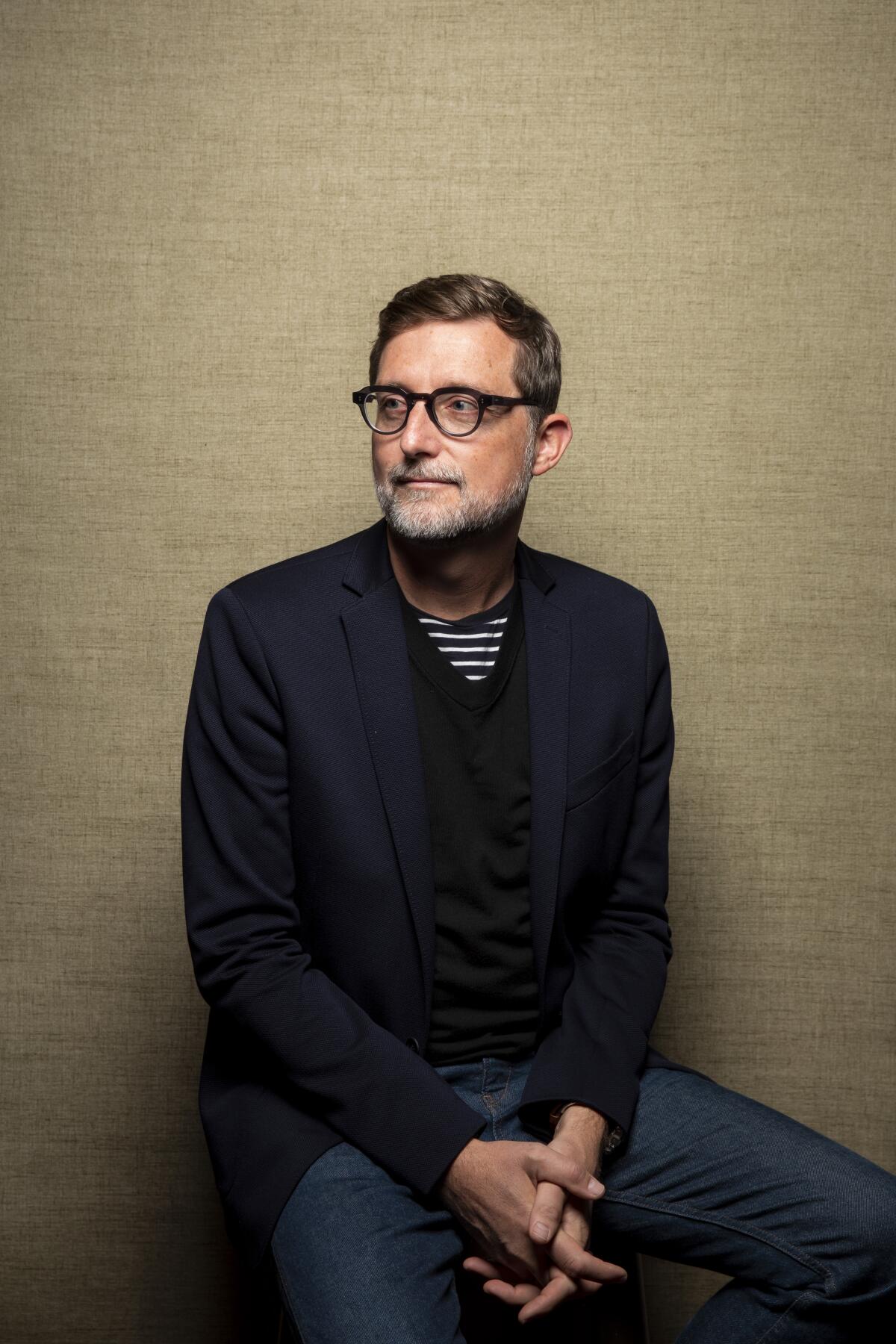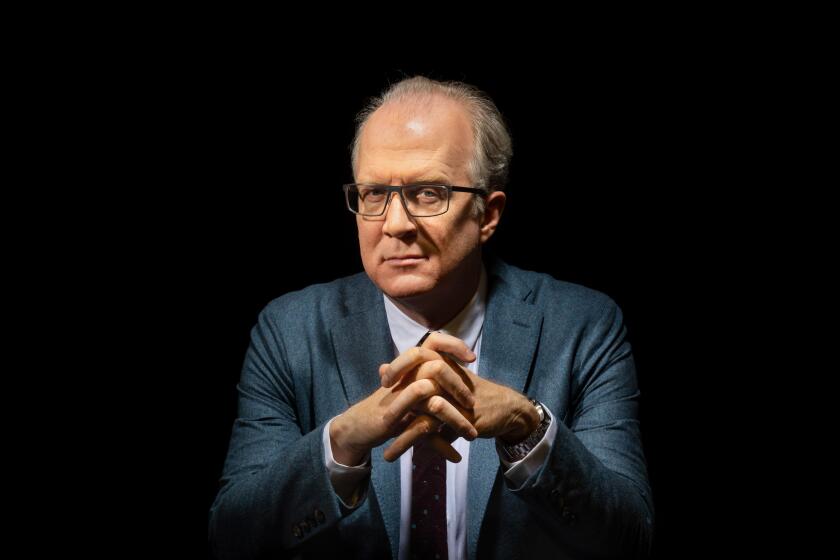How color drove the visual style behind ‘Ford v Ferrari’
- Share via
“Ford v Ferrari,” the latest film from James Mangold (“Logan,” “The Wolverine”) centers on one of the most legendary tales of the Ford Motor Co.: when it hired Carroll Shelby (played by Matt Damon) and poured every ounce of engineering (and money) into its now iconic GT40 to try to beat Ferrari at the running of the 24 Hours of Le Mans with driver Ken Miles (Christian Bale).
Production designer François Audouy talked to The Envelope about how he detailed the 1960s period piece that’s based on a true story.
This is your third film with James Mangold. What stands out to you working with the director?
With Jim, the look of the movie comes out organically. He doesn’t rush into things and lets the sauce simmer. He trusts the process and has a lot of patience in prep to let the visual voice develop. That’s why I love collaborating with him.
What did you focus on in prep to visually tell the allegory?
Neither of us are car gurus, so we had to become experts in the material. We did a deep dive into all the imagery of the period and, visually, we were inspired by the 1966 film “Grand Prix” for its visceral look at racing.
But an early moment for us was when we put the images of all the cars up on the wall. The cars were going to be the constant in the film. Just looking at them inspired us to use color in interesting ways. We didn’t want a sepia-toned film; we wanted to harness the kaleidoscope of color that presented itself.
“Ford v Ferrari” director James Mangold talks to Mark Olsen about his new action film and also reacts to the latest comments from Martin Scorsese about Marvel movies.
How did you use color to distinguish location and the company cultures of Ford and Ferrari?
There are no subtitles to tell you where you are, so we created clarity through specific color palettes and architectural motifs. With Ford, steely blues add a feeling of a cool corporate America. Then with Ferrari, we added warm naturalistic earth tones that also contrast with the sun-bleached palette of Shelby’s workshops in Venice, Calif.
One hurdle looked to be recreating the Ford factory in Michigan. How did you accomplish that?
Nearly every sequence was shot on location in Southern California, Georgia or Le Mans, France. A gigantic old factory in downtown Los Angeles stood in for the Ford factory. We took over the whole building and restored the location — building out the management offices above and the three assembly lines of cars down below — all of which worked under their own power.

That’s really cool.
It was. We went to great lengths to make that factory scene where we’re introduced to Henry Ford II [Tracy Letts] as authentic as we could. We even found 21 Ford Falcons, bought them and stripped them down to recreate them being born on the assembly line. If you look closely, each row tells a story: The first being the cars coming out of primer, the middle being painted cars with their windshields attached and the third row is the finished car ready for sale.
For ‘Ford v Ferrari,’ Tracy Letts found much more to work with than the standard bristling authority figure.
How difficult was detailing the sets behind the 24 Hours of Le Mans?
It was the hardest thing I’ve ever done. The Le Mans track, known as the Circuit de la Sarthe, no longer resembles the 1966 version, so everything from the grandstands to the track itself had to be created from scratch. In our research, we learned racing aficionados know every turn and inch of the iconic track, so we couldn’t fake it. We had to cast every turn and match nearly every hump in the road.
Then how did you pull the nostalgic racing sequence together?
We needed to represent the race in a very macro way and divided it into four different pieces. The grandstands, VIP boxes, car pits and press boxes were all built at the Agua Dulce Airpark in Santa Clarita, Calif. We collected over 300 photos of Le Mans, and the organization provided us with never-before-seen footage of the 1966 race, which allowed us to detail the set with the period-correct banners, advertisements, posters and signage.
We also took over the Grand Prize of America racetrack in Hutchinson Island [in Georgia] and completely re-dressed it. We used about 3,200 feet of the Road Atlanta in Braselton to recreate a full-scaled version of the Dunlop Bridge. And we found a stretch of Route 46 outside of Statesboro for the Mulsanne Straight and the hairpin turn in the movie. Each piece represented a very specific part of the race that we storyboarded and fed into [the early viewing system] previs, so it was all planned out before shooting.
Were the Le Mans scenes the biggest accomplishment on the project?
In a way. As a production designer, you have to be a believer. What I’m most proud of on this film is that it’s really hard to tell the difference between the practical and visual effects. I think it speaks to the tight integration we had between all the departments. We were real partners in bringing Jim’s vision to the screen.
More to Read
Only good movies
Get the Indie Focus newsletter, Mark Olsen's weekly guide to the world of cinema.
You may occasionally receive promotional content from the Los Angeles Times.









